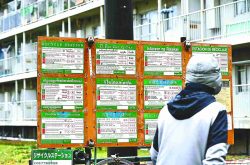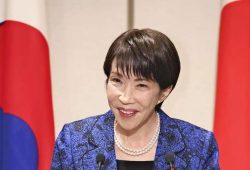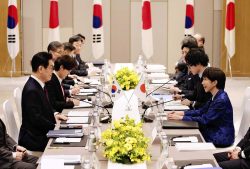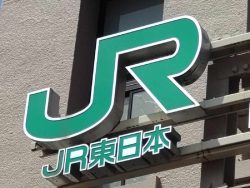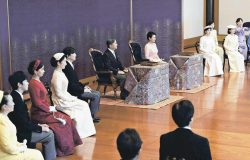Registration of Sado Gold Mines: Improved Japan-S. Korea Ties Help Realize World Heritage Bid
16:42 JST, August 4, 2024
It is delightful to see the value of an important Japanese historic site recognized internationally. Behind this recognition is the improved relations between Japan and South Korea in recent years.
UNESCO’s World Heritage Committee has decided to register the Sado Island Gold Mines in Sado, Niigata Prefecture, as a World Cultural Heritage site.
At the mine complex on Sado Island, ore was mined and koban gold coins were minted manually under the control of the Tokugawa shogunate during the Edo period until the mid-19th century. The committee described the gold mines as an extraordinary example of the continued use of advanced manual techniques when mechanization was progressively being introduced around the world.
With the listing of the mines as a World Heritage site, more people from Japan and abroad are expected to visit them thanks to greater name recognition. And the listing is great news for local residents, who have worked for many years to get the mines registered.
The main question for Japan’s bid to register the site was whether Tokyo could win the cooperation of Seoul.
Japan’s Council for Cultural Affairs selected the gold mine complex as a candidate for nomination in 2021. In response, South Korea, under the administration of then President Moon Jae-in, issued a statement opposing the nomination, claiming that people from the Korean Peninsula were forced to work at the mines during wartime.
In light of this, the Japanese government for a time leaned toward not recommending the site. However, following calls from members of the Liberal Democratic Party, the government in 2022 finalized its decision to seek World Heritage listing of the site.
Earlier this year, an advisory body to UNESCO recommended a “referral” status for the Sado gold mines — the second-highest recommendation after “inscription” — requesting Japan to provide historical explanations and set up an exhibition at the site for all periods when gold was mined. This request was perceived as a result of consideration for opposition from South Korea.
Japan and South Korea then had a series of dialogues to determine the content for the exhibition. The South Korean side finally accepted the World Heritage registration of the Sado mines, apparently due to its appreciation for Japan’s response as well as its desire to support the friendly relationship between the two countries.
Following the decision to add the mine complex to the World Heritage list, Japan began making public at a museum in Sado documents showing the living conditions of miners, including those from the Korean Peninsula.
Although Japan does not acknowledge that there was forced labor, people from the Korean Peninsula did indeed work in the gold mines during wartime. It should not be strange to present this point in the site’s history.
Since South Korean President Yoon Suk Yeol took office, relations between Japan and South Korea have been improving. This World Heritage registration may have provided an opportunity to reaffirm the importance of maintaining favorable relations.
Next year, Japan and South Korea will mark the 60th anniversary of the normalization of diplomatic relations. Even if there are differences in their views of history or over other issues, the two countries should be able to overcome some of their challenges through repeated dialogue based on a relationship of trust.
(From The Yomiuri Shimbun, Aug. 4, 2024)
"Editorial & Columns" POPULAR ARTICLE
-

Artificial Intelligence Expands Possibilities for Foreign Language Learners
-

Build Intellectual, Physical Strength, As Well As Communicative Power / Japan Should Move from Beneficiary to Shaper of World Order
-

Global Economy in Turmoil: Prevent Free Trade System from Going Adrift / Risks to Financial Markets Must Be Heeded
-

Japan-China Strain Set to Persist as Beijing Officials Self-Interestedly Bash Tokyo; Takaichi Unlikely to Back Down
-

Elderly People Living Alone: What Should be Done to Ensure Living with Peace of Mind until the End?
JN ACCESS RANKING
-

BOJ Gov. Ueda: Highly Likely Mechanism for Rising Wages, Prices Will Be Maintained
-

Core Inflation in Tokyo Slows in December but Stays above BOJ Target
-

Osaka-Kansai Expo’s Economic Impact Estimated at ¥3.6 Trillion, Takes Actual Visitor Numbers into Account
-

Japan Govt Adopts Measures to Curb Mega Solar Power Plant Projects Amid Environmental Concerns
-

Japan, U.S. Start Talks on Tokyo’s $550 Bil. Investment in U.S.; Energy, AI Projects Were Focus of 1st Meeting





